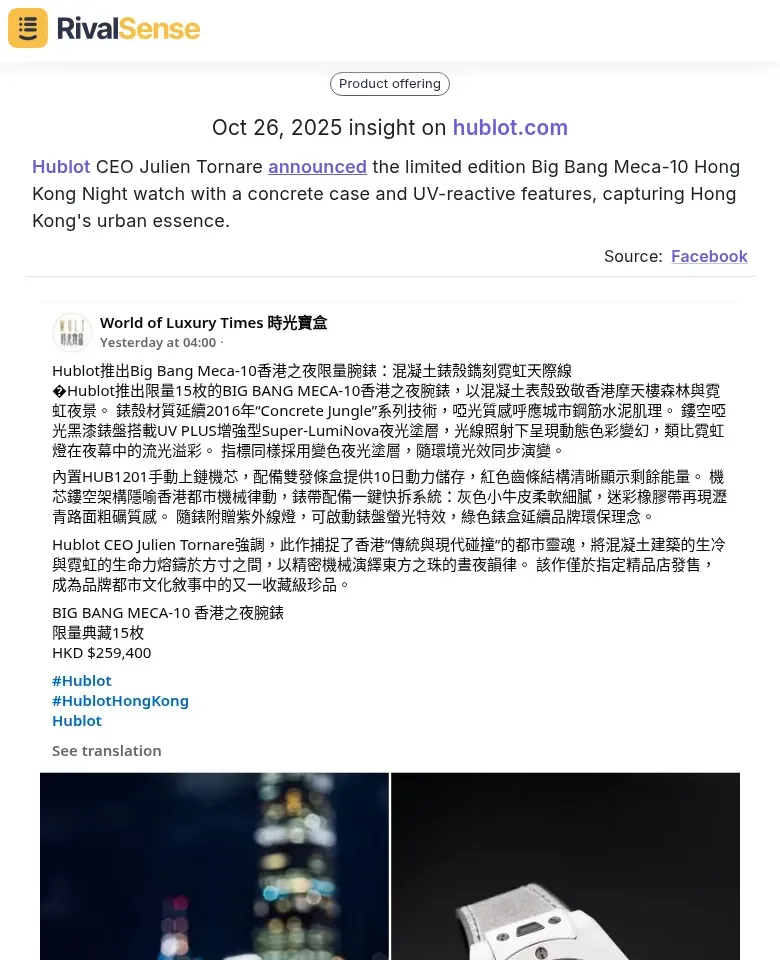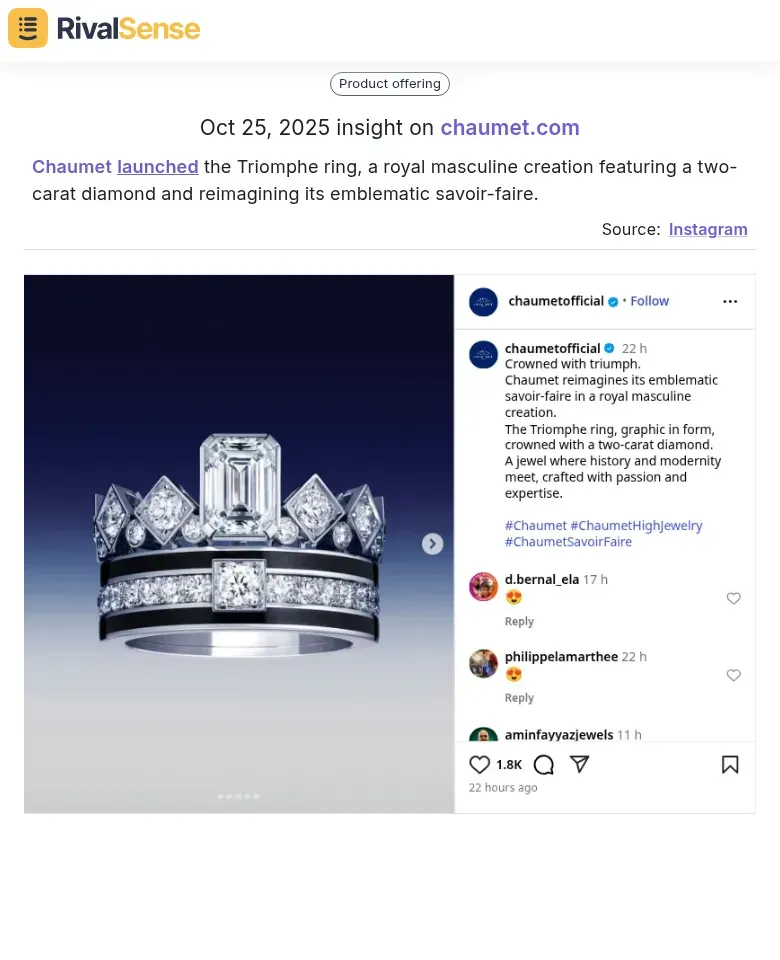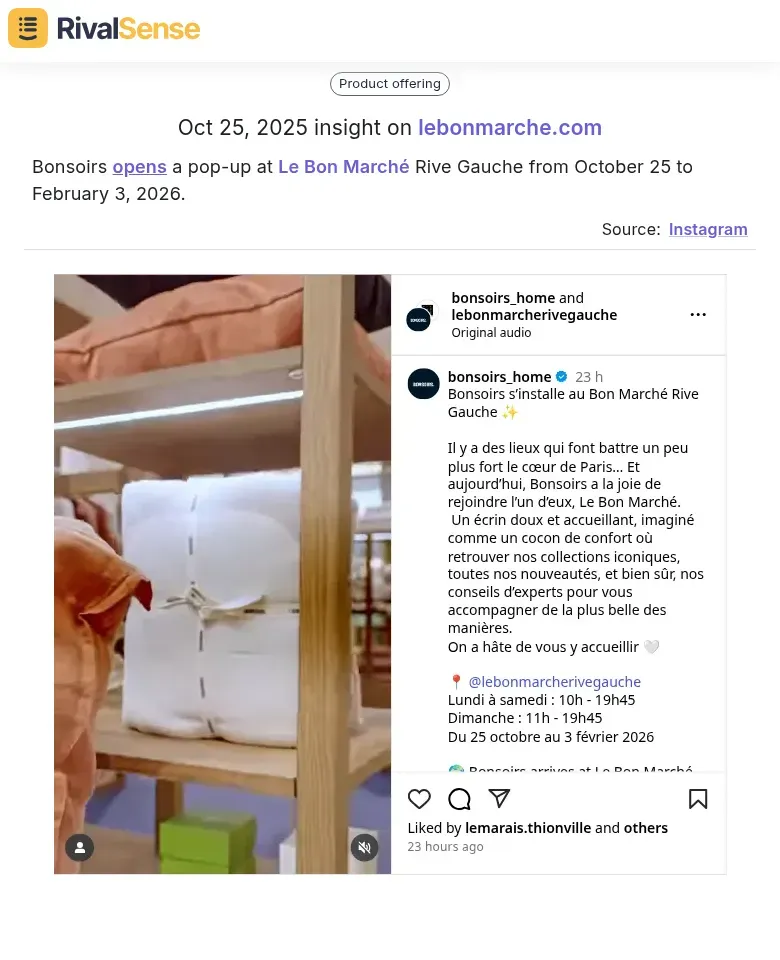Competitor Market Research Reports: 5 Steps to Effective Analysis
In today's competitive business landscape, staying ahead requires deep insights into your competitors' moves. Competitor market research reports provide the foundation for strategic decisions, helping you identify opportunities and threats. Before we get to the "how" of conducting a competitive market analysis, let's talk for a minute about the "why." Why is it worth your time to collect and review information about what your competitors are doing?
"Most people conducting a competitive market analysis are trying to understand how their business, product or brand is positioned," said Sherry Smoak, assistant professor and director of the D.K. Hardin Center for Market Research at Elmhurst University. "They're trying to understand: How do our product lines compare? How does our pricing compare? How does our distribution model compare? The answers to these questions can be found by completing a competitive analysis."
In a crowded marketplace, you want to give clients a reason to pick you over anyone else. A competitive market analysis defines effective methods of reaching your customer base, reveals opportunities for outperforming the competition and delineates where your resources are most needed.
Now, on to ...
HOW TO RUN A COMPETITIVE MARKET ANALYSIS
🔍 1. IDENTIFY YOUR COMPETITION
Identifying your competition is the first critical step in any market analysis. Without a clear view of who you're up against, it's impossible to strategize effectively. This may sound basic, but if you don't know who you are up against, how will you know how to outperform them?
Practical Checklist:
- ✅ Create a spreadsheet with columns for primary, secondary, and emerging competitors
- ✅ Use Google search for your product/service + "alternatives" or "competitors"
- ✅ Check industry directories and trade associations
- ✅ Monitor business news for new market entrants
Push beyond the temptation to narrow your focus on just your No. 1 competitor in your competitive market analysis. Think about it as an array: Who are your primary competitors? Your secondary ones? And who is in that third group, the one that may not be on your horizon right now but is nibbling around the edges of your customer base?
A Google search can turn up firms that weren't even on your radar; search for whatever product or service you are offering and see what comes up. Do the same with social media channels. And you can still unearth information the old-fashioned way: through annual reports, trade associations, financial filings and databases, and local newspapers.
📊 2. AUDIT THEIR CONTENT
Auditing competitor content reveals their marketing strategies and customer engagement tactics. By analyzing what they publish, you can identify gaps and opportunities for your own business. Now that you know who you are facing, it's time to get a better idea of what they bring to the table. Through your competitive market analysis, determine what content creation are they focusing on, and what opportunities have they left open? There are many threads to follow here:
- Blogs
- Whitepapers
- eBooks
- Videos
- Webinars
- Podcasts
- Press releases
- Case studies
Practical Tips:
- 📝 Use a content audit template to track competitor content types, frequency, and engagement
- 📝 Note gaps where your business could provide better or different content
- 📝 Monitor their content performance through social shares and comments
These platforms, among others, provide clues to your competition's sales approach and target market. Be sure to assess quality, not just quantity. How engaging is the content? How up-to-date is it? How often and where is new content added? What are the gaps that your business could bridge?
🌐 3. EXAMINE THEIR WEBSITE AND ANALYZE THEIR SEO CONTENT FOCUS
Examining competitor websites and SEO strategies uncovers how they attract and retain customers. A well-structured site can indicate strong digital presence and search engine optimization efforts. Websites have structure, and the better the structure, the more likely the site will get a high ranking in search engines.
Step-by-Step Guide:
- 🔗 Click every link in the header and dropdowns
- 🔗 Click every link in the footers
- 🔗 Document web page titles, URL architecture, H1 tags
- 🔗 Analyze internal links and image text
- 🔗 Identify primary and secondary keywords
To get a feel for how customers might use your competitor's website—and how search engines latch on to it—click every link in the header and dropdowns. Click every link in the footers. And, yes, click every link in between. Start a list of web page titles, URL architecture, H1 tags, internal links, image text and, of course, keywords.
Again, assess what they are doing well and where they have left holes for you to fill.
📱 4. TAKE A PLUNGE INTO SOCIAL MEDIA
Social media analysis provides real-time insights into competitor interactions and brand perception. It's where many businesses engage directly with their audience, making it a goldmine for strategic intelligence. Social media is an indispensable way to interact with users and fans and share your content, but everyone uses it a little differently.
Social Media Analysis Checklist:
- ✅ Profile completeness and branding consistency
- ✅ Posting frequency and timing
- ✅ Content types (images, videos, links, text)
- ✅ Engagement rates and follower growth
- ✅ Hashtag usage and campaign tracking
How do your competitors show up on social media? What do their profiles say? What do they post and repost? How often? Do they use images? Photos?
Just as importantly, who is following them? Who do they follow? Each social media site has its own thumbprint, so examine the differences (and similarities) among Facebook, Twitter, LinkedIn, YouTube, Snapchat and Pinterest.
🎯 5. EVALUATE YOUR NEXT STEPS
Evaluating your next steps transforms raw data into actionable strategies. This phase ensures that your analysis leads to concrete improvements and measurable outcomes. Now you have a complete picture of who your competition is, what content they are creating, how they design their website and which social media platforms they engage in. You are able to identify where you need to improve and how to invest your resources to not just keep pace with your competitors but to stay a step ahead.
Action Plan Template:
- 🚀 Immediate opportunities (next 30 days)
- 📈 Short-term improvements (1-3 months)
- 🎯 Long-term strategic changes (3-12 months)
- 💼 Resource allocation recommendations
More and more people are realizing that with the amount of data we can get our hands on now, students need to know how to process this data and use it in a meaningful way.
—Sherry Smoak, assistant professor and director of the D.K. Hardin Center for Market Research
STREAMLINING COMPETITOR RESEARCH WITH MODERN TOOLS
Manual research can be time-consuming and inconsistent, but modern tools automate this process, saving valuable time and resources. While manual competitor research provides valuable insights, the process can be time-consuming and difficult to maintain consistently. This is where modern competitive intelligence tools can transform your market research efforts.
Tools like RivalSense automate the tracking of critical competitor activities across 80+ sources, including:
- Product launches and updates
- Pricing changes
- Event participation
- Partnership announcements
- Regulatory developments
- Management changes
- Media mentions
Instead of spending hours each week manually checking competitor websites, social media, and news sources, you receive a comprehensive weekly email report that consolidates all relevant competitor movements. This allows you to focus on strategic analysis rather than data collection.
Real-World Competitor Insights from RivalSense
Here are examples of insights that RivalSense tracks, demonstrating the value of automated competitor monitoring for your business strategy:
-
Product Launches: Hublot CEO Julien Tornare announced the limited edition Big Bang Meca-10 Hong Kong Night watch with a concrete case and UV-reactive features, capturing Hong Kong's urban essence.

Why it's valuable: Tracking product launches helps you understand competitor innovation and market trends, allowing you to adjust your product strategy and stay competitive. -
New Product Releases: Chaumet launched the Triomphe ring, a royal masculine creation featuring a two-carat diamond and reimagining its emblematic savoir-faire.

Why it's valuable: Monitoring new releases reveals competitor focus on product lines and target demographics, informing your own development plans and marketing approaches. -
Retail Events: Bonsoirs opens a pop-up at Le Bon Marché Rive Gauche from October 25 to February 3, 2026.

Why it's valuable: Event tracking shows competitor expansion tactics and retail strategies, helping you anticipate market moves and plan your own initiatives accordingly.
IMPLEMENTING YOUR FINDINGS
Turning insights into action is crucial for gaining a competitive edge. Implementing your findings ensures that your analysis drives real business improvements and growth.
Quick Start Guide:
- 🎯 Prioritize 2-3 immediate opportunities from your analysis
- 👥 Assign team members to each competitive gap
- 📊 Set measurable goals for each improvement area
- 📅 Schedule regular competitive review meetings
- 🔍 Implement tracking to measure progress against competitors
Remember that competitive analysis isn't a one-time activity. The market landscape changes constantly, and maintaining an ongoing competitive intelligence program ensures you never fall behind.
KEY TAKEAWAYS
- 🚀 Competitive analysis reveals both threats and opportunities
- 📈 Regular monitoring prevents strategic surprises
- ⚙️ Automation tools can save significant research time
- 💡 Actionable insights should drive immediate business decisions
- 🏆 The most successful companies make competitor intelligence an ongoing discipline
By following these steps and leveraging modern tools to streamline the process, you can transform competitive market research from a periodic exercise into a continuous strategic advantage.
Ready to streamline your competitor research? Try RivalSense for free and get your first competitor report today at https://rivalsense.co/
📚 Read more
👉 Competitor Partnership Framework: SaaS Growth Templates
👉 How JAL's Museum Expansion Uncovered Competitor Growth Strategies
👉 Instagram Competitor Insights: Data-Driven Key Account Growth
👉 Key Account Growth: Identity Verification Case Study Success
👉 Master Competitor Pricing Insights to Boost Account Health
